Abstract
Barber, T. L. (Cornell University, Ithaca, N.Y.) and J. Fabricant. Primary isolation of Mycoplasma organisms (PPLO) from mammalian sources. J. Bacteriol. 83:1268–1273. 1962.—Mycoplasma (PPLO) were isolated from cattle, pigs, sheep, rats, and dogs. A total of 39 isolates was obtained from 307 samples from 166 animals. Of these, 24 isolates were from semen of bulls in an artificial breeding establishment; the other 15 were from various tissues of the animals mentioned.
Variations of two basal media together with chicken embryos were used in primary isolation attempts. PPLO enrichment broth (Difco) was supplemented with either horse or swine serum. The broth was used as overlay with a horse blood agar slant. Viande foie (VF) medium was usually enriched with horse or swine serum and was used both with and without 1% yeast hydrolyzate. Chicken embryos (5 days old) were inoculated via the yolk sac.
Of the 39 isolations made, 22 were obtained on a single variation of one basal medium or only after a passage through chicken embryos. The 22 were isolated as follows: 4 in modified PPLO enrichment broth; 13 in variations of VF medium; and 5 were found only after growth in chicken embryos. The other 17 isolates grew, on primary culture, in a combination of media. Only three of these grew in all media and in embryos. Eight grew in two variations of VF basal, two in both VF and PPLO enrichment broths, one in embryos and PPLO enrichment broth, and three in embryos, and VF basal medium. If either basal medium or chicken embryos had been omitted from the trial, many isolations would not have been made.
Full text
PDF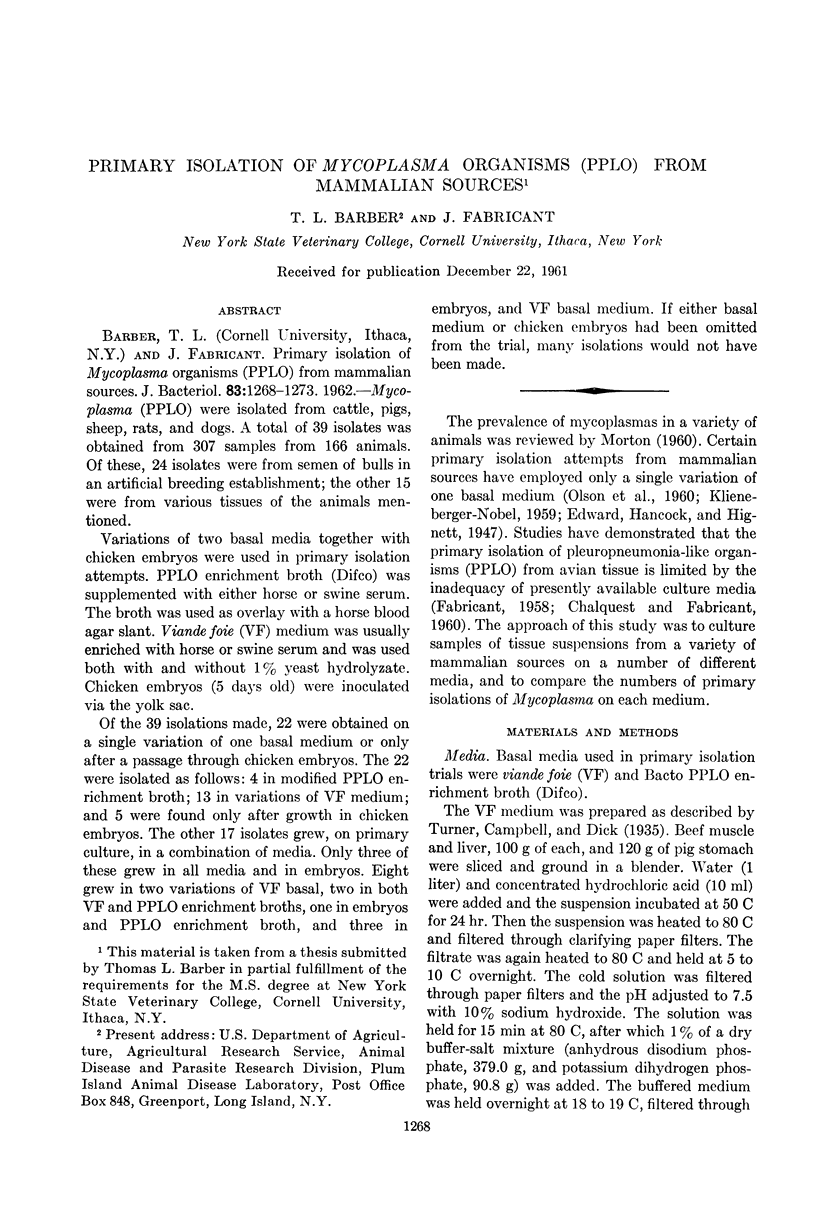
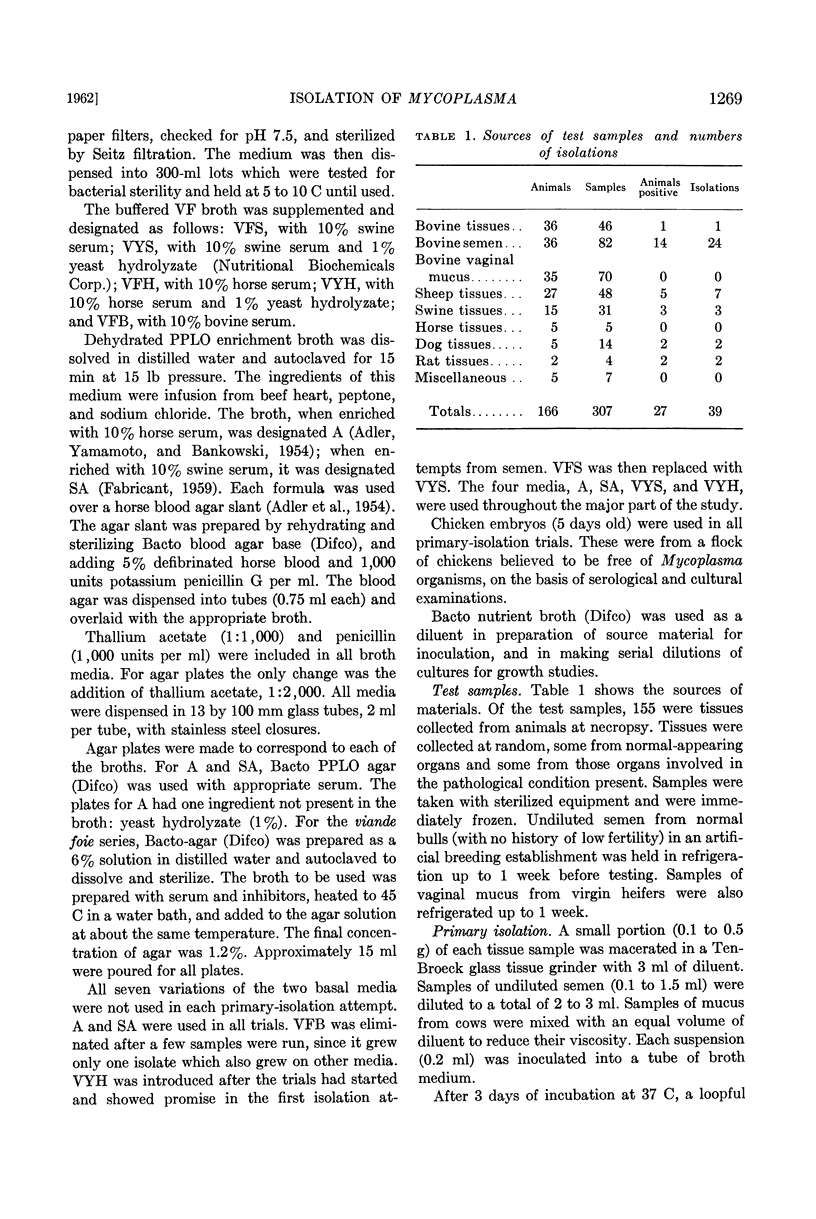
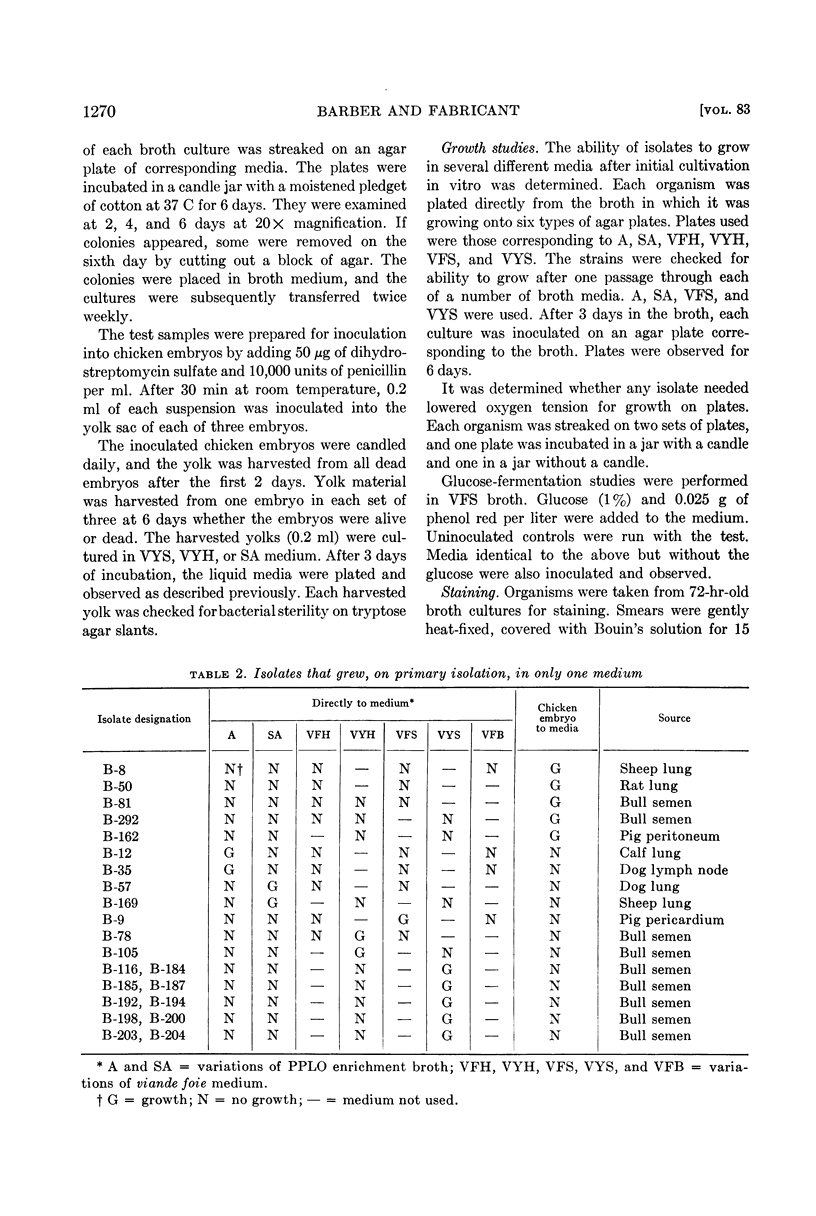
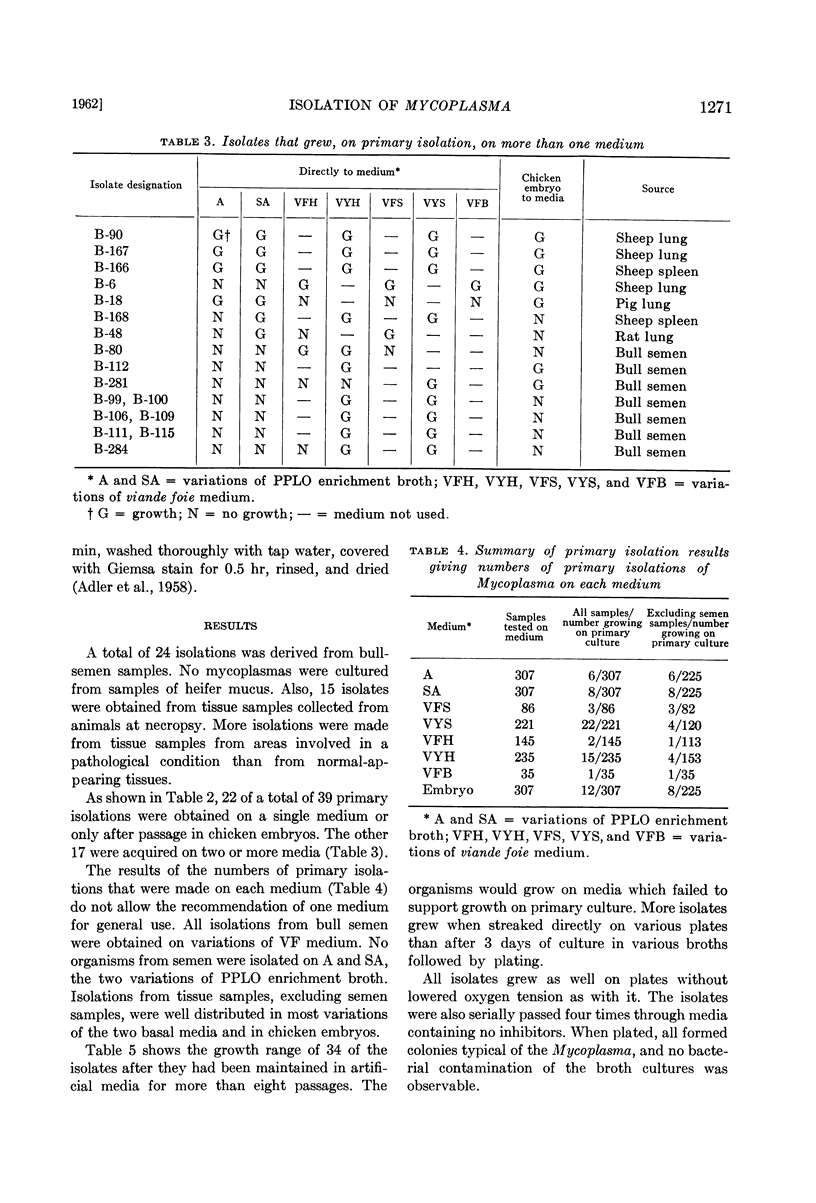
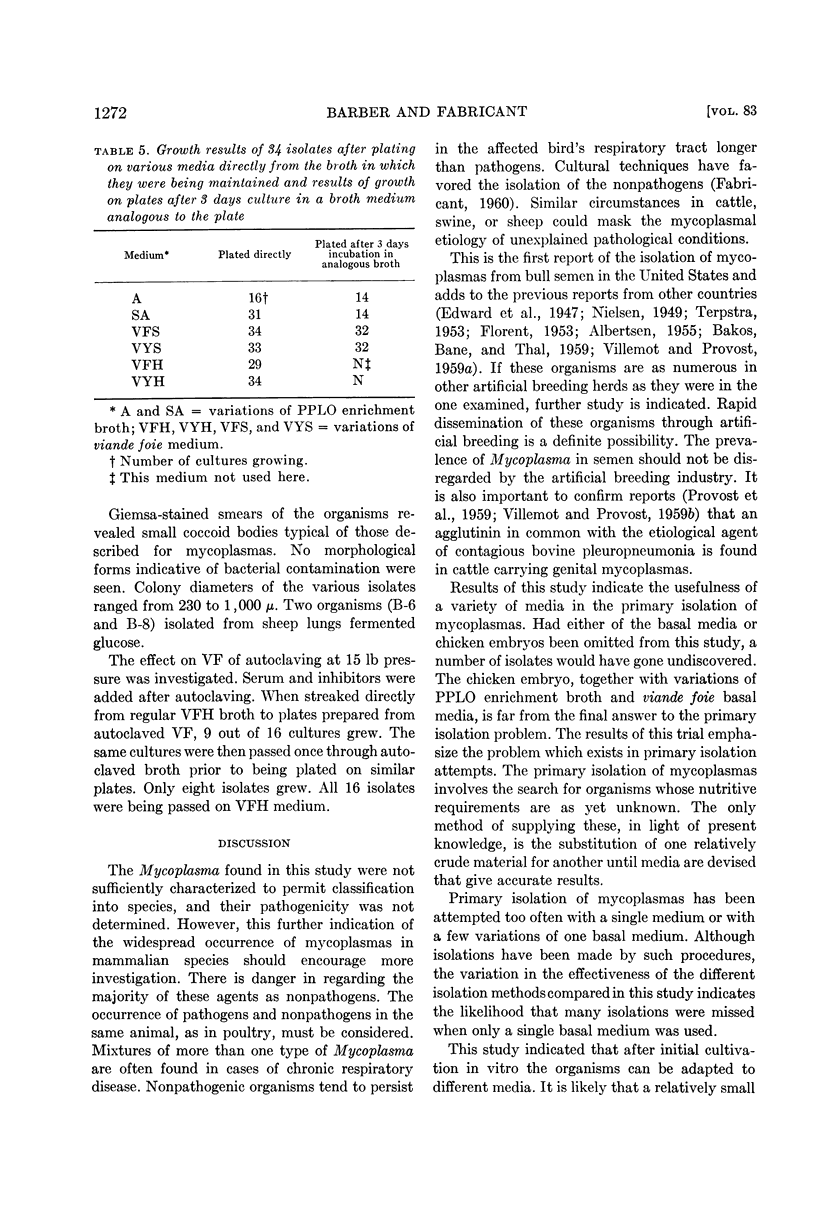
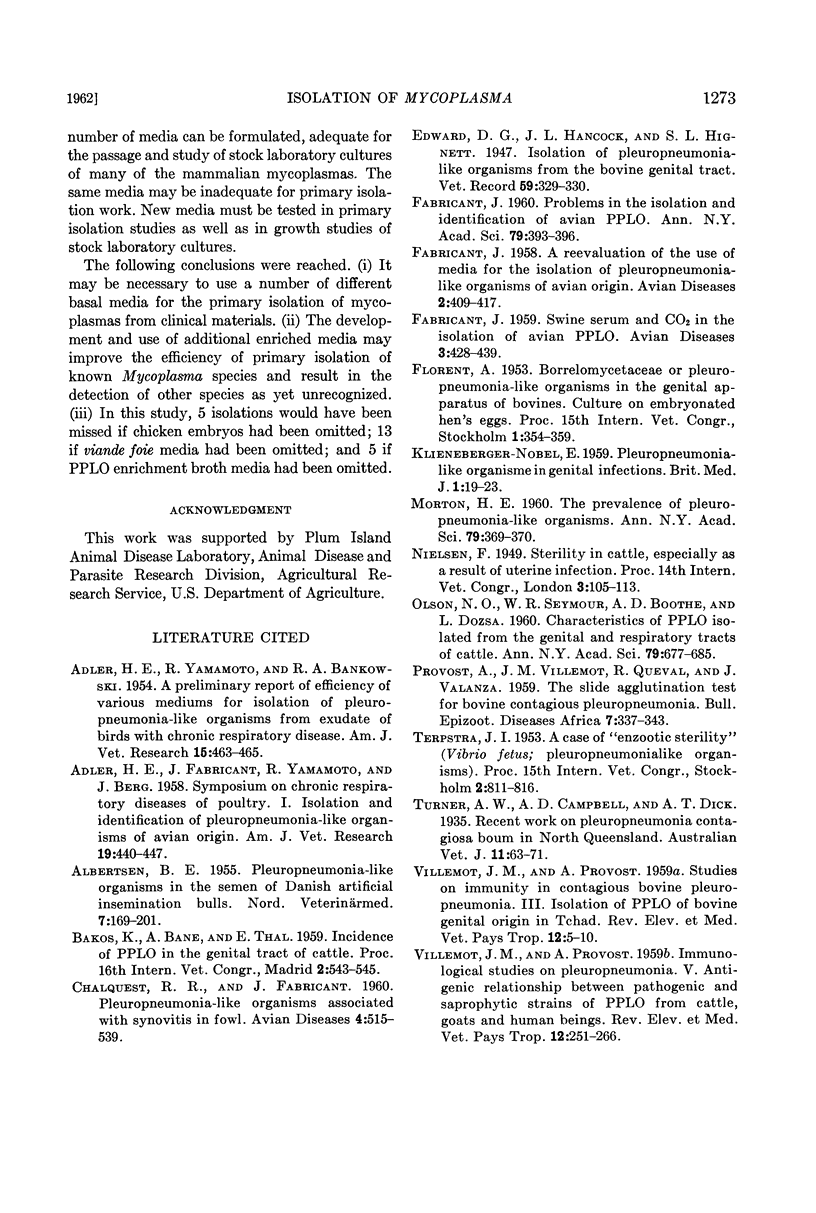
Selected References
These references are in PubMed. This may not be the complete list of references from this article.
- ADLER H. E., FABRICANT J., YAMAMOTO R., BERG J. Symposium on chronic respiratory diseases of poultry. I. Isolation and identification of pleuropneumonia-like organisms of avian origin. Am J Vet Res. 1958 Apr;19(71):440–447. [PubMed] [Google Scholar]
- ADLER H. E., YAMAMOTO R., BANKOWSKI R. A. A preliminary report of efficiency of various mediums for isolation of pleuropneumonia-like organisms from exudates of birds with chronic respiratory disease. Am J Vet Res. 1954 Jul;15(56):463–465. [PubMed] [Google Scholar]
- FABRICANT J. Problems in the isolation and identification of avian PPLO. Ann N Y Acad Sci. 1960 Jan 15;79:393–396. doi: 10.1111/j.1749-6632.1960.tb42703.x. [DOI] [PubMed] [Google Scholar]
- KLIENEBERGER-NOBEL E. Pleuropneumonia-like organisms in genital infections. Br Med J. 1959 Jan 3;1(5113):19–23. doi: 10.1136/bmj.1.5113.19. [DOI] [PMC free article] [PubMed] [Google Scholar]
- MORTON H. E. The prevalence of pleuropneumonialike organisms. Ann N Y Acad Sci. 1960 Jan 15;79:369–370. doi: 10.1111/j.1749-6632.1960.tb42697.x. [DOI] [PubMed] [Google Scholar]
- OLSON N. O., SEYMOUR W. R., BOOTHE A. D., DOZSA L. Characteristics of PPLO isolated from the genital and respiratory tracts of cattle. Ann N Y Acad Sci. 1960 Jan 15;79:677–685. doi: 10.1111/j.1749-6632.1960.tb42742.x. [DOI] [PubMed] [Google Scholar]


